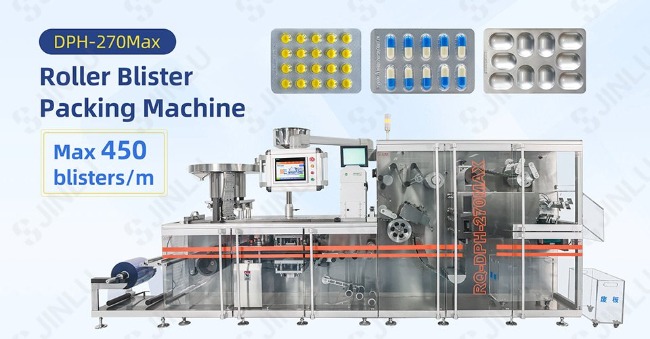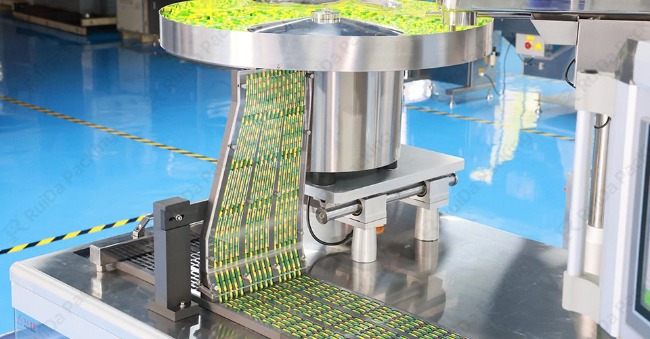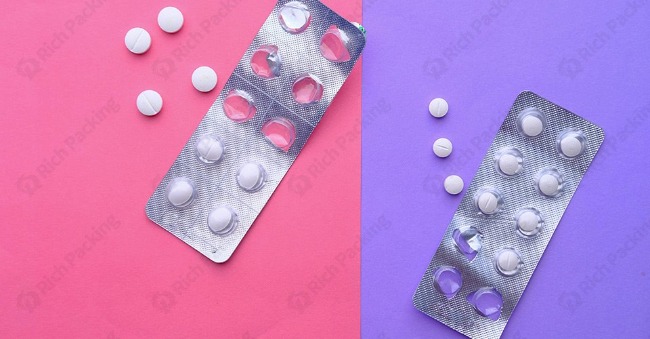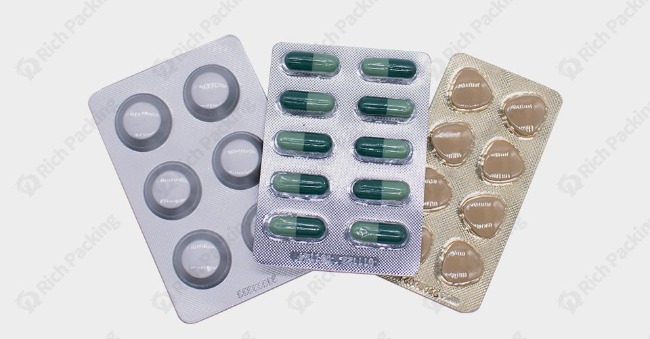Categories
New Blog
Tags
Flat blister packaging machine selection is a critical decision for pharmaceutical manufacturers seeking to optimize production efficiency and ensure superior product protection. In this comprehensive guide, you will learn about the advantages of choosing flat blister packaging machines, understand their technical benefits, and explore real-world applications that demonstrate their value. We will cover topics from production efficiency and quality control to cost savings and regulatory compliance. By the end of this guide, you will be equipped with actionable insights that help you choose the right blister packaging solutions for your operations.

Flat blister packaging machines are designed to form, fill, and seal individual dosage units using thermoformed plastic cavities and lidding materials, typically aluminum foil. As you integrate these machines into your production line, you benefit from enhanced product protection, precise dosing, and high-speed packaging capabilities. The flat design is particularly advantageous for space utilization and material efficiency.
When you examine a flat blister packaging machine, you’ll notice that it comprises several critical components:
Understanding these components is crucial for you to appreciate the overall efficiency and reliability that flat blister packaging machines can offer.

In this section, you will learn about the five key advantages of selecting flat blister packaging machines for your pharmaceutical production line.
When you choose flat blister packaging, you secure your products against environmental factors that can degrade medication quality.
Each blister is individually sealed, making it evident if tampering has occurred. This increases consumer trust and aligns with stringent regulatory requirements.
The precise formation of cavities ensures that each dose is protected individually. This minimizes cross-contamination and dosage errors, crucial factors in maintaining high-quality standards.
Real-World Insight: Pharmaceutical companies have reported up to a 30% reduction in product degradation when switching from bulk packaging to flat blister packs, thanks to their superior barrier properties.
Flat blister packaging machines are engineered for high-speed production without compromising quality.
Modern machines can produce thousands of blister packs per hour. As you integrate these systems, you can significantly increase your production capacity and meet market demands more effectively.
With advanced control systems and real-time data analytics, you can monitor and optimize every stage of the packaging process. Automation minimizes human error and reduces downtime, leading to smoother operations.
Flat blister machines deliver uniform blister formation and sealing, ensuring that each unit meets strict quality criteria. Consistency in product quality translates to fewer recalls and higher customer satisfaction.
Data Insight: Facilities employing flat blister packaging machines have seen production throughput increases of up to 25%, while reducing defect rates by 15%.

While the initial investment in flat blister packaging machines may be higher, the long-term cost benefits are significant.
The precise design of flat blister packs minimizes material wastage. Thermoforming processes are highly efficient, ensuring that nearly all of the plastic sheet is utilized.
Due to the enhanced protection and consistency, you experience lower product spoilage and fewer recalls. This not only saves money but also protects your brand reputation.
Automation and high-speed production reduce labor costs and increase overall efficiency. Energy-efficient designs further contribute to lowering operational expenses.
Cost Comparison Table:
| Flat Blister Packaging | Alternative Packaging | |
|---|---|---|
| Production Throughput | Up to 15,000 units/hour | 10,000 units/hour |
| Material Waste | ~2% | ~5% |
| Downtime | 4% of production time | 10% of production time |
| Unit Cost (per pack) | $0.10 |
This comparison highlights how flat blister packaging can lead to significant cost savings over time.
Regulatory compliance is non-negotiable in the pharmaceutical industry. Flat blister packaging machines are designed to meet or exceed industry standards.
Good Manufacturing Practices (GMP) require strict control over packaging processes. Flat blister packaging systems are built with materials and processes that comply with these guidelines, ensuring that each unit is produced under controlled conditions.
These machines are engineered to meet the stringent requirements of regulatory bodies such as the FDA and EMA. This not only ensures product safety but also simplifies the approval process, reducing the time-to-market for new drugs.
Automated quality control systems integrated into flat blister packaging machines provide detailed production data. This traceability is critical during audits and inspections, ensuring that every step of the process is documented and verifiable.
Regulatory Example: Companies using flat blister packaging have reported smoother regulatory audits and fewer compliance issues, thanks to the high level of traceability and quality control inherent in these systems.
As environmental concerns become more critical, sustainable packaging solutions are increasingly important. Flat blister packaging offers several eco-friendly advantages.
Many flat blister packs are made from recyclable plastics and aluminum foil. By selecting eco-friendly materials, you can reduce the environmental impact of your packaging processes.
Modern flat blister packaging machines are designed for energy efficiency. Optimized heating and forming processes reduce energy consumption, lowering your carbon footprint.
The precision of the thermoforming process minimizes material waste, contributing to more sustainable production practices. Reduced waste not only benefits the environment but also translates into lower disposal costs.
Environmental Impact: Implementing sustainable packaging practices can reduce energy usage by up to 20% and decrease material waste significantly, aligning your operations with global sustainability goals.
As you aim to optimize your packaging processes, it’s important to stay abreast of technological advancements that enhance machine performance and product quality.
Modern flat blister packaging machines come equipped with sophisticated control systems that allow you to monitor real-time data, adjust parameters on the fly, and ensure consistent quality. These systems use IoT sensors and cloud-based analytics to provide insights into every aspect of the packaging process.
A modular design approach allows you to customize your packaging line to meet specific production needs. Whether you require adjustments for different product types or integration with other production systems, modular designs offer the flexibility to scale and adapt your operations efficiently.
Newer models of flat blister packaging machines incorporate energy-saving features such as optimized heating elements and high-efficiency motors. These innovations reduce energy consumption, lower operational costs, and support environmental sustainability.
Automation is at the forefront of modern manufacturing. Robotic systems integrated into flat blister packaging lines handle tasks such as material feeding, quality inspection, and packaging seamlessly. This reduces manual intervention and increases overall throughput, ensuring that your operations remain competitive.

Understanding the practical applications of flat blister packaging machines will help you appreciate their advantages in a real-world context.
A mid-sized pharmaceutical manufacturer upgraded to a state-of-the-art flat blister packaging machine. By optimizing machine settings and integrating advanced automation, they increased production throughput by 25%. The improved efficiency reduced downtime and resulted in significant cost savings, demonstrating the economic benefits of adopting modern packaging technology.
Another company specializing in moisture-sensitive medications observed a dramatic reduction in product degradation after switching from bottle storage to flat blister packaging. The superior barrier properties of the blister packs extended the shelf life of their medications by 30%, leading to fewer recalls and enhanced customer satisfaction.
A leading pharmaceutical firm implemented flat blister packaging machines equipped with inline quality control and real-time monitoring. This upgrade improved traceability and ensured strict adherence to GMP, FDA, and EMA guidelines. As a result, the company experienced smoother regulatory audits and reduced compliance-related disruptions.
These case studies provide concrete evidence of how flat blister packaging machines can transform your production line, enhance product quality, and support regulatory compliance.
To fully realize the advantages of flat blister packaging machines, you must adopt effective implementation strategies. Here are several steps you can take:
Begin by analyzing your current packaging processes. Identify bottlenecks, quality issues, and areas where material waste is significant. Use this data to set benchmarks for improvement.
Upgrade your equipment to state-of-the-art flat blister packaging machines that offer high-speed production, energy efficiency, and advanced quality control. Evaluate different models based on your production needs and budget constraints.
Regularly calibrate and fine-tune your machine settings, including temperature, pressure, and dwell time. Leverage real-time monitoring tools to adjust these parameters dynamically, ensuring optimal performance.
Ensure that your raw materials are of high quality and stored under optimal conditions. Improve your material handling processes to maintain consistent powder flow and reduce the risk of defects during thermoforming.
Regular training for your operators is essential. Provide ongoing education on machine operation, troubleshooting, and new technological advancements. A well-trained workforce can quickly adapt to changes and optimize production processes.
Adopt a data-driven approach to continuously monitor and improve your production line. Track key performance indicators (KPIs) such as throughput, quality metrics, and energy consumption. Use this data to implement process improvements and predictive maintenance strategies.
Integrate inline quality control systems to monitor each blister pack in real time. Regular quality audits and statistical process control (SPC) will help you maintain consistent product quality and regulatory compliance.
Your packaging process is part of a larger ecosystem. Effective integration with your supply chain can further enhance the benefits of flat blister packaging.
By ensuring seamless integration across your production, packaging, and distribution processes, you maximize the overall efficiency and effectiveness of your operations.
Investing in flat blister packaging machines may require a higher initial outlay, but the long-term economic benefits are significant.
When you calculate the return on investment, consider the following:
Implementing flat blister packaging machines can lead to a measurable ROI that justifies the initial investment and supports your long-term business goals.
Sustainability is a growing priority in the pharmaceutical industry, and flat blister packaging offers several environmental benefits.
Flat blister packs often use recyclable materials such as PET and aluminum foil. These materials reduce waste and support recycling initiatives, aligning your operations with global sustainability standards.
Modern blister packaging machines are designed to consume less energy, contributing to lower operational costs and a reduced carbon footprint. Energy-efficient designs also help you meet environmental regulations and corporate sustainability goals.
Precise thermoforming minimizes excess material, reducing overall waste. This not only lowers disposal costs but also contributes to a more sustainable production process.
By adopting eco-friendly practices and selecting sustainable packaging materials, you can enhance both your brand reputation and your bottom line.
As you plan for the future, staying ahead of technological trends is crucial for maintaining a competitive edge.
The integration of IoT, AI, and digital twin technology will continue to transform packaging processes. These innovations provide real-time monitoring, predictive maintenance, and process optimization that can further boost your production efficiency.
Future systems will incorporate even more advanced automation, reducing manual intervention and increasing consistency. Robotic handling, enhanced sensors, and smarter control systems will drive further improvements in throughput and quality.
Continued research into sustainable materials and energy-efficient designs will shape the next generation of blister packaging machines. Expect to see more eco-friendly options that reduce environmental impact while maintaining high performance.
By embracing these future trends, you can ensure that your packaging line remains state-of-the-art and capable of meeting evolving market demands.
To help you achieve optimal performance from your flat blister packaging machines, consider these best practices:
By following these best practices, you can maximize the output, efficiency, and quality of your packaging operations, ensuring that your products remain competitive in the market.
Your packaging process should be an integral part of your overall production and distribution strategy. For you, effective integration with the supply chain is crucial to ensure product quality and timely delivery.
Effective supply chain integration not only enhances production efficiency but also contributes to better market penetration and customer satisfaction.
Data analytics is essential for optimizing your flat blister packaging operations. As you collect real-time data from your machines, you can identify trends, anticipate maintenance needs, and continuously improve production processes.
By leveraging these insights, you can make data-driven decisions that improve overall efficiency and reduce operational costs.
Blister packs dominate medical packaging due to their superior protection, high production efficiency, regulatory compliance, and sustainability benefits. Understanding the advantages of flat blister packaging machine selection is crucial to extending medication shelf life and ensuring patient safety. For further inquiries or personalized consultation on optimizing your packaging strategy, please contact us today.